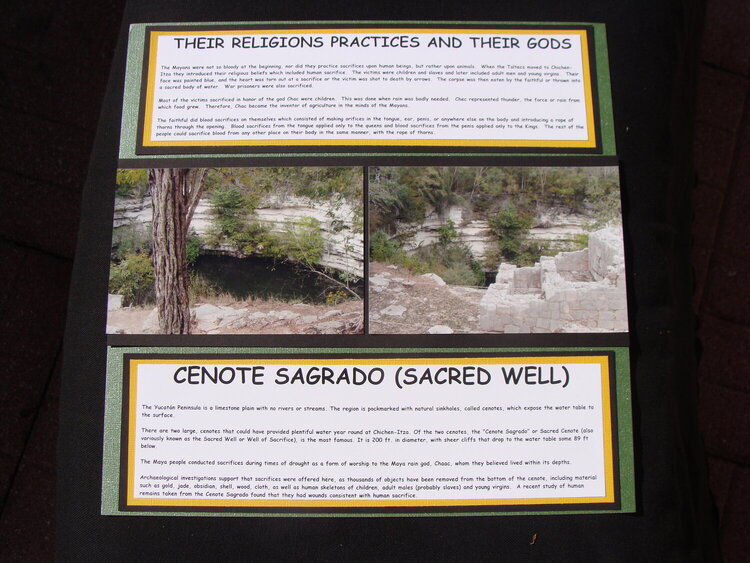EXTRA 11% OFF Orders $100+ With Code: THANKYOU


 Give a Cheer
Give a Cheer
THEIR RELIGIONS PRACTICES AND THEIR GODS
The Mayans were not so bloody at the beginning, nor did they practice sacrifices upon human beings, but rather upon animals. When the Toltecs moved to Chichen-Itza they introduced their religious beliefs which included human sacrifice. The victims were children and slaves and later included adult men and young virgins. Their face was painted blue, and the heart was torn out at a sacrifice or the victim was shot to death by arrows. The corpse was then eaten by the faithful or thrown into a sacred body of water. War prisoners were also sacrificed.
Most of the victims sacrificed in honor of the god Chac were children. This was done when rain was badly needed. Chec represented thunder, the force or rain from which food grew. Therefore, Chac became the inventor of agriculture in the minds of the Mayans.
The faithful did blood sacrifices on themselves which consisted of making orifices in the tongue, ear, penis, or anywhere else on the body and introducing a rope of thorns through the opening. Blood sacrifices from the tongue applied only to the queens and blood sacrifices from the penis applied only to the Kings. The rest of the people could sacrifice blood from any other place on their body in the same manner, with the rope of thorns.
CENOTE SAGRADO (SACRED WELL)
The Yucatán Peninsula is a limestone plain with no rivers or streams. The region is pockmarked with natural sinkholes, called cenotes, which expose the water table to the surface.
There are two large, cenotes that could have provided plentiful water year round at Chichen-Itza. Of the two cenotes, the "Cenote Sagrado" or Sacred Cenote (also variously known as the Sacred Well or Well of Sacrifice), is the most famous. It is 200 ft. in diameter, with sheer cliffs that drop to the water table some 89 ft below.
The Maya people conducted sacrifices during times of drought as a form of worship to the Maya rain god, Chaac, whom they believed lived within its depths.
Archaeological investigations support that sacrifices were offered here, as thousands of objects have been removed from the bottom of the cenote, including material such as gold, jade, obsidian, shell, wood, cloth, as well as human skeletons of children, adult males (probably slaves) and young virgins. A recent study of human remains taken from the Cenote Sagrado found that they had wounds consistent with human sacrifice.
No products have been added to this project.
Thanks for spreading positivity!
May 10, 2011
May 08, 2011
May 07, 2011
May 03, 2011